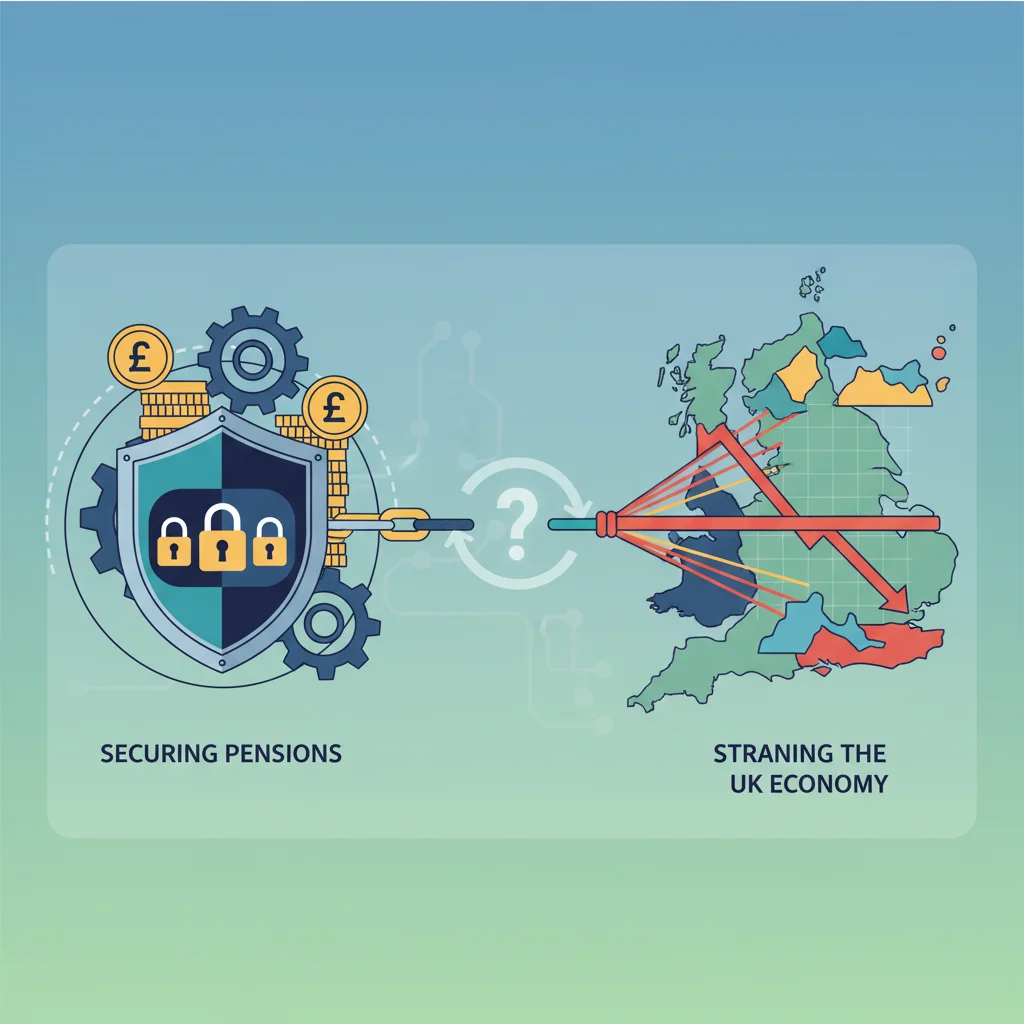
The Triple Lock Dilemma: Securing Pensions or Straining the UK Economy?
In the complex world of national economics and personal finance, few policies are as politically charged and economically significant as the UK’s state pension “triple lock.” For millions of current and future retirees, it’s a vital safeguard, a promise of dignity in later life. For economists and policymakers, it’s a fiscal time bomb, a well-intentioned policy with potentially unsustainable consequences. This mechanism, designed to protect the purchasing power of pensioners, sits at the heart of a fierce debate about fiscal responsibility, intergenerational fairness, and the future of the UK economy.
Understanding the triple lock is crucial not just for those approaching retirement, but for every investor, taxpayer, and business leader in the country. Its ripples are felt far beyond pension payments, influencing government borrowing, taxation policies, and the overall climate for investing. So, what exactly is this powerful guarantee, why does it spark such intense debate, and what does its future hold in an era of technological disruption and economic uncertainty?
Deconstructing the Triple Lock: A Three-Way Guarantee
At its core, the triple lock is a government commitment to increase the state pension each year by the highest of three specific metrics. Introduced by the Conservative-Liberal Democrat coalition government in 2010, its purpose is to ensure that pensioners’ incomes don’t fall behind the rising cost of living or the growth in earnings of the working population.
The three components, or “locks,” are reviewed each year to determine the following April’s state pension increase. Here is a breakdown of the mechanism:
| The “Lock” | What it Measures | Why it Matters |
|---|---|---|
| Average Earnings Growth | The annual growth in average wages, typically measured in the year to July. | This ensures that pensioners share in the country’s economic prosperity. If wages are rising, pensions rise too, preventing a widening gap between retirees and the working population. |
| Consumer Price Index (CPI) Inflation | The rate of increase in the cost of goods and services, typically measured by the CPI in the year to September. | This is the most direct protection against the cost of living. It ensures the real-terms value of the pension is not eroded by inflation, preserving pensioners’ purchasing power. |
| A Floor of 2.5% | A fixed minimum increase. | This acts as a safety net. In periods of low inflation and stagnant wage growth, it guarantees a modest real-terms increase in the state pension, as seen in several years during the 2010s. |
For example, if in a given year average earnings grow by 4%, inflation is 3%, and the third lock is 2.5%, the state pension would rise by 4%—the highest of the three. This simple but powerful formula has had a profound effect on the value of the state pension over the last decade.
The Real-World Impact: How Much is the State Pension Worth?
Thanks to the triple lock, the state pension has seen significant growth. The full new state pension, for those who reached state pension age on or after 6 April 2016, is currently £221.20 per week for the 2024/25 tax year. This amounts to over £11,500 per year. For those on the pre-2016 basic state pension, the full amount is £169.50 per week.
The policy has been instrumental in lifting pensioners out of poverty. According to the Institute for Fiscal Studies, without the triple lock, the state pension would be around £11 billion per year lower today, highlighting its immense financial impact on both recipients and the government. It has ensured that the state pension’s value has not only kept up with but often outpaced both inflation and earnings, providing a much-needed boost to the financial security of millions.
The Economic Tightrope: Sustainability vs. Security
While the benefits for pensioners are clear, the triple lock is a source of major concern for economists and the Treasury. Its costs are substantial and, more importantly, unpredictable, making long-term fiscal planning a significant challenge. The debate revolves around several key pressure points.
The Argument for the Triple Lock
Proponents argue that the policy is a moral and economic imperative. It provides a dignified income for those who have contributed to society throughout their working lives. By maintaining pensioners’ spending power, it also supports the wider economy, as this demographic represents a significant block of consumers. Furthermore, it acts as a crucial safety net in a world where private pension coverage is not universal and investing in the stock market carries inherent risks.
The Argument Against: A Cascade of Concerns
- Fiscal Unsustainability: The primary concern is the escalating cost. The Office for Budget Responsibility (OBR) has repeatedly warned that the triple lock’s “ratchet effect”—where it always picks the highest of three numbers—makes it grow faster than the economy that supports it. This places an ever-increasing strain on public finances, potentially leading to higher taxes or cuts to other services like healthcare and education.
- Intergenerational Fairness: Many younger workers feel the system is inequitable. They are paying taxes to fund a generous, guaranteed pension increase for a generation that often benefited from final salary pensions and property booms—a guarantee they themselves are unlikely to receive. This fuels a debate about the social contract between generations.
- Economic Volatility: The policy’s vulnerability to statistical anomalies was laid bare in 2021. A post-pandemic surge in average earnings, caused by workers returning from furlough, would have triggered an 8% pension increase. Recognizing this distortion, the government temporarily suspended the earnings link, creating a “double lock” for one year. This event highlighted how the mechanism can be disconnected from the underlying health of the economy.
Beyond the Lock: Implications for Investing, Banking, and Technology
The triple lock debate has broader implications for the entire financial ecosystem. For individuals, it underscores the critical importance of proactive retirement planning. The state pension, however generous, is unlikely to provide for a luxurious retirement on its own. This reality is a powerful driver for the personal investing and wealth management sectors. Individuals must engage with products like private pensions, Stocks and Shares ISAs, and other investment vehicles to build a sufficient nest egg.
For the government and the banking sector, the policy’s cost influences national debt levels. To fund its commitments, the government issues bonds (gilts). A rising pension bill means more borrowing, which can affect interest rates and the country’s creditworthiness, with knock-on effects for everything from mortgage rates to international trading.
Can Financial Technology Offer a Path Forward?
Looking ahead, the conversation around pension sustainability is increasingly intersecting with the world of fintech. While the triple lock is a policy issue, technology can offer tools to mitigate some of the challenges.
- Enhanced Financial Planning: Modern financial technology platforms offer sophisticated, low-cost tools that empower individuals to better plan for their retirement, reducing reliance on the state. Robo-advisors and pension dashboards are making it easier than ever to track and manage long-term savings.
- Future of Payments: While still a nascent concept, some futurists speculate that blockchain technology could one day offer a more transparent and efficient infrastructure for managing and distributing state and private pension payments, potentially reducing administrative costs and fraud.
- Dynamic Systems: In the long term, could technology enable a more dynamic pension system? Instead of a rigid triple lock, one could imagine a system that uses real-time economic data to make more nuanced adjustments, though the political and technical hurdles for such a system are immense.
Conclusion: A Delicate Balance for the Future
The state pension triple lock is more than just a piece of fiscal policy; it is a reflection of society’s commitment to its elderly, set against the hard realities of national economics. It has successfully protected millions from poverty but has set the UK on a fiscally challenging path that cannot be ignored. The ongoing debate is not merely about numbers on a spreadsheet but about fairness, security, and the kind of social contract we want between generations.
For finance professionals, investors, and business leaders, the future of the triple lock is a key variable in the UK’s economic outlook. Its eventual reform seems inevitable, but the political will to enact that change remains elusive. In the meantime, the clearest lesson is one of self-reliance. The state provides a foundation, but the responsibility for building a secure and prosperous retirement rests increasingly on the shoulders of the individual, armed with the tools of modern finance and a forward-looking investment strategy.


